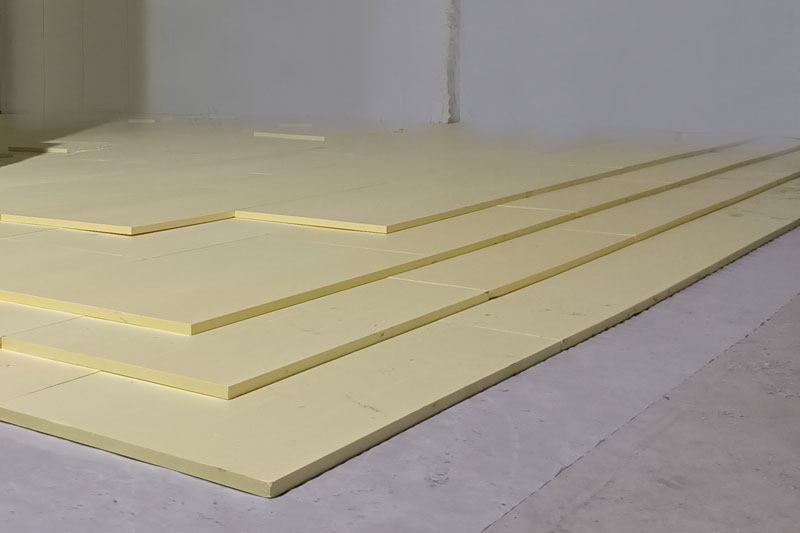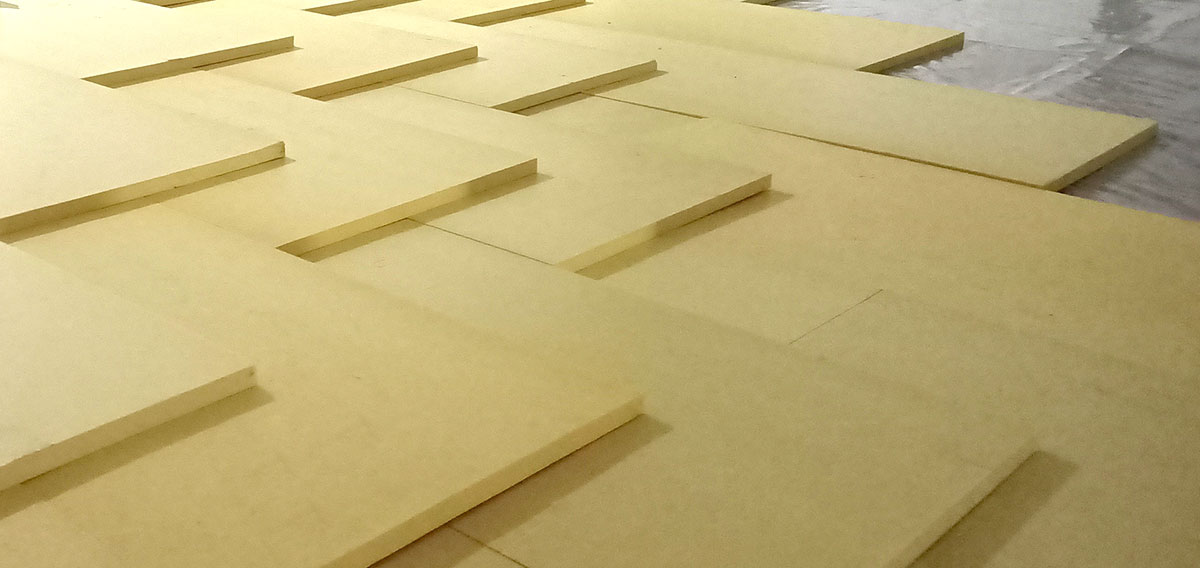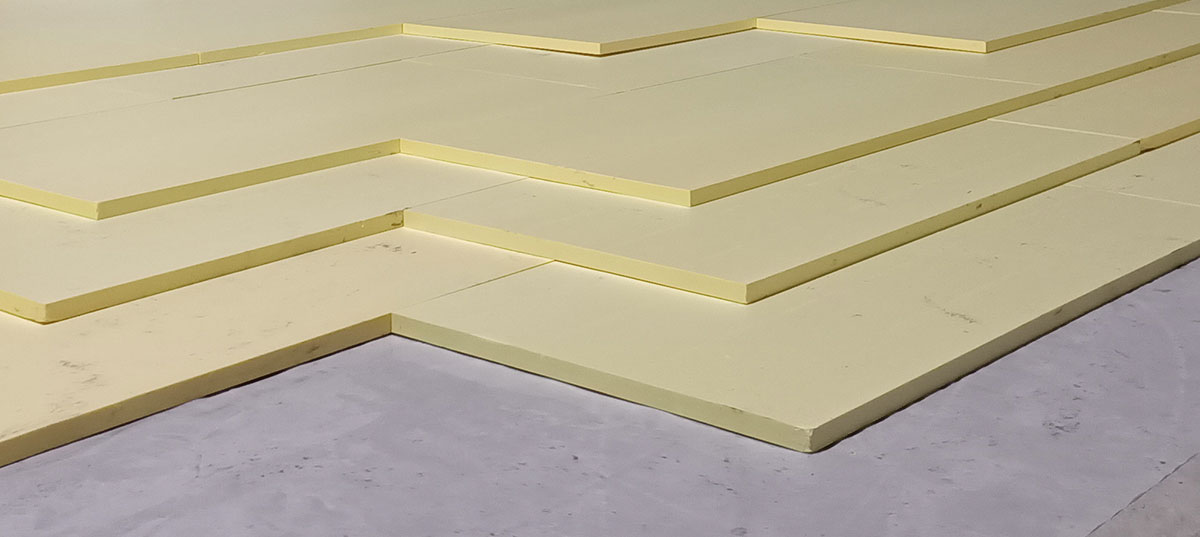Long-term commitment to the R & D and manufacturing of extruded board insulation materials, a new service platform
Production workshop feeding volume per hour 2 tons, daily output 1000 cubic meters

Comprehensive analysis of ground extruded board insulation system: material characteristics, application scenarios and construction specifications
1. The core definition and material composition of ground extruded board
1. Definition: Ground extruded board is made of polystyrene resin as raw material and extruded XPS (extruded polystyrene) board as insulation layer. It is laid on the ground base of the building to block heat transfer through low thermal conductivity and achieve indoor constant temperature. Energy-saving system.
2. Core materials:
1) XPS extruded board;
2) Auxiliary materials: moisture-proof film (PE film, thickness ≥ 0.2mm), binder (cement-based or polyurethane), grid cloth (anti-cracking).

2. Types of extruded boards classified by application scenarios
| Types | Typical application scenario | specially crafted |
| Residential floor panel | Basic insulation of living room and bedroom floor | Surface embossing design enhances adhesion with mortar layer |
| Extruded board for floor heating | Wet and dry floor heating system base | Prefabricated grooves (spacing 100 - 200 mm), fixing heating pipes |
| Garage/commercial floor panels | Underground garage, shopping mall floor | Anti-puncture layer (composite HDPE film), anti-rolling by vehicles |
| Universal roof/floor board | Flat roof insulation (inverted roof) | Covered with aluminum foil on both sides to reflect heat |

3. Key performance indicators and technical advantages
1. thermal insulation performance
Thermal resistance (R value): The thermal resistance of 20 mm thick XPS plate is ≈ 0.67 (m2 K)/W, which is equivalent to the thermal insulation effect of 120 mm thick red brick wall.
Energy-saving efficiency: In severe cold areas, ground insulation can reduce indoor heat loss by more than 30%, and when combined with floor heating, the energy saving rate reaches 25%-40%.
2. structural mechanical properties
Compressive strength: Residential floor requirements shall be ≥ 150 kPa (can withstand a load of 200 kg/㎡), and garage floor requirements shall be ≥ 300 kPa (resist vehicle crushing).
Anti-deformation ability: When the temperature changes by ± 20 ℃, the linear expansion coefficient is ≤ 0.03mm/m ℃ to avoid ground cracking.
3. Waterproof, moisture and durability
Water absorption rate: Volume water absorption rate ≤ 1.5%, surface water repellency ≥ 98%, can directly contact moist base (such as basement floor).
Service life: Environmentally friendly XPS board without Freon, with aging resistance of 50 years (complies with GB/T 10801.2 - 2021 standard)
4. Typical application scenarios and cases
1. Energy-saving renovation of residential floors: Install 20 mm extruded boards on the floors of old buildings in the north, which can increase indoor temperatures by 3 - 5 ° C in winter and save annual heating costs by 15 - 20 yuan/㎡.
2. Integration of floor heating system: Compared with wet systems, dry floor heating modules (extruded board + aluminum film) reduce floor height occupation by 30 mm and increase the heating rate by 50%(it takes 2 hours from 15 ° C to 22 ° C).
3. Special environment applications:
Cold storage floor: Lay a 50mm thick flame retardant XPS board (oxygen index ≥ 30), combined with a moisture-proof and vapor-barrier layer to prevent frosting on the ground;
Planting roof: Extruded board surface composite water storage and drainage board, with both thermal insulation and drainage functions, with a load of ≤ 15 kg/㎡.
5. Considerations for purchase and installation
1. Shopping Points
Density detection: Estimated by weighing method;
Flame retardant level: B1 (self-extinguishing when off fire) is required for public places, and B2 for household use, but it needs to be equipped with fire isolation belts.
Environmental certification: Check the VOC emission (≤ 0.1mg/m ³) and formaldehyde content (≤ 0.05mg/m ³), and give priority to E0 products.
3. Installation taboos
Direct welding on the surface of extruded boards is strictly prohibited, and fire-proof boards need to be laid;
During the construction of the floor heating system, the spacing between pipe fixing nails shall be ≤ 500 mm to avoid local compression and damage of the plate.
6. Industry development trends and new technologies
1. Ultra-thin and efficient insulation: Nano-porous XPS plate (thermal conductivity ≤ 0.025W/(mK)), with a thickness of 15 mm, can meet the building standard of 75% energy saving;
2. Fabricated module: prefabricated modules integrating extruded panels, floor heating pipes, and reflective films to improve construction efficiency;
3. Environmentally friendly materials: Bio-based extruded board (raw material contains 30% vegetable fiber) reduces carbon emissions by 25%, suitable for green building certification projects.
If you need insulation plan design for specific projects (such as heat load calculation, material consumption list), you can provide building plans and further optimization of climate parameters in the area.
1. The core definition and material composition of ground extruded board
1. Definition: Ground extruded board is made of polystyrene resin as raw material and extruded XPS (extruded polystyrene) board as insulation layer. It is laid on the ground base of the building to block heat transfer through low thermal conductivity and achieve indoor constant temperature. Energy-saving system.
2. Core materials:
1) XPS extruded board;
2) Auxiliary materials: moisture-proof film (PE film, thickness ≥ 0.2mm), binder (cement-based or polyurethane), grid cloth (anti-cracking).

2. Types of extruded boards classified by application scenarios
| Types | Typical application scenario | specially crafted |
| Residential floor panel | Basic insulation of living room and bedroom floor | Surface embossing design enhances adhesion with mortar layer |
| Extruded board for floor heating | Wet and dry floor heating system base | Prefabricated grooves (spacing 100 - 200 mm), fixing heating pipes |
| Garage/commercial floor panels | Underground garage, shopping mall floor | Anti-puncture layer (composite HDPE film), anti-rolling by vehicles |
| Universal roof/floor board | Flat roof insulation (inverted roof) | Covered with aluminum foil on both sides to reflect heat |

3. Key performance indicators and technical advantages
1. thermal insulation performance
Thermal resistance (R value): The thermal resistance of 20 mm thick XPS plate is ≈ 0.67 (m2 K)/W, which is equivalent to the thermal insulation effect of 120 mm thick red brick wall.
Energy-saving efficiency: In severe cold areas, ground insulation can reduce indoor heat loss by more than 30%, and when combined with floor heating, the energy saving rate reaches 25%-40%.
2. structural mechanical properties
Compressive strength: Residential floor requirements shall be ≥ 150 kPa (can withstand a load of 200 kg/㎡), and garage floor requirements shall be ≥ 300 kPa (resist vehicle crushing).
Anti-deformation ability: When the temperature changes by ± 20 ℃, the linear expansion coefficient is ≤ 0.03mm/m ℃ to avoid ground cracking.
3. Waterproof, moisture and durability
Water absorption rate: Volume water absorption rate ≤ 1.5%, surface water repellency ≥ 98%, can directly contact moist base (such as basement floor).
Service life: Environmentally friendly XPS board without Freon, with aging resistance of 50 years (complies with GB/T 10801.2 - 2021 standard)
4. Typical application scenarios and cases
1. Energy-saving renovation of residential floors: Install 20 mm extruded boards on the floors of old buildings in the north, which can increase indoor temperatures by 3 - 5 ° C in winter and save annual heating costs by 15 - 20 yuan/㎡.
2. Integration of floor heating system: Compared with wet systems, dry floor heating modules (extruded board + aluminum film) reduce floor height occupation by 30 mm and increase the heating rate by 50%(it takes 2 hours from 15 ° C to 22 ° C).
3. Special environment applications:
Cold storage floor: Lay a 50mm thick flame retardant XPS board (oxygen index ≥ 30), combined with a moisture-proof and vapor-barrier layer to prevent frosting on the ground;
Planting roof: Extruded board surface composite water storage and drainage board, with both thermal insulation and drainage functions, with a load of ≤ 15 kg/㎡.
5. Considerations for purchase and installation
1. Shopping Points
Density detection: Estimated by weighing method;
Flame retardant level: B1 (self-extinguishing when off fire) is required for public places, and B2 for household use, but it needs to be equipped with fire isolation belts.
Environmental certification: Check the VOC emission (≤ 0.1mg/m ³) and formaldehyde content (≤ 0.05mg/m ³), and give priority to E0 products.
3. Installation taboos
Direct welding on the surface of extruded boards is strictly prohibited, and fire-proof boards need to be laid;
During the construction of the floor heating system, the spacing between pipe fixing nails shall be ≤ 500 mm to avoid local compression and damage of the plate.
6. Industry development trends and new technologies
1. Ultra-thin and efficient insulation: Nano-porous XPS plate (thermal conductivity ≤ 0.025W/(mK)), with a thickness of 15 mm, can meet the building standard of 75% energy saving;
2. Fabricated module: prefabricated modules integrating extruded panels, floor heating pipes, and reflective films to improve construction efficiency;
3. Environmentally friendly materials: Bio-based extruded board (raw material contains 30% vegetable fiber) reduces carbon emissions by 25%, suitable for green building certification projects.
If you need insulation plan design for specific projects (such as heat load calculation, material consumption list), you can provide building plans and further optimization of climate parameters in the area.